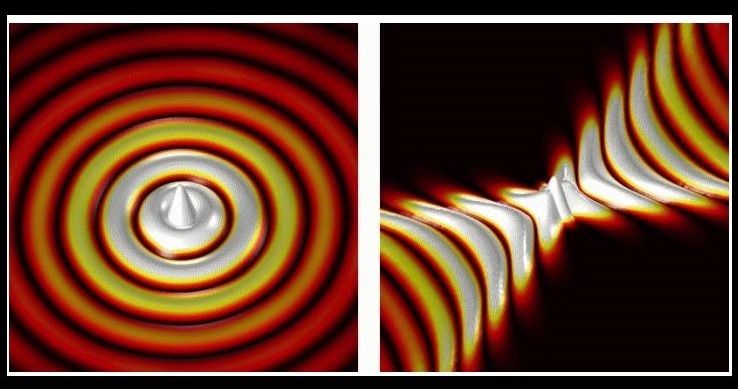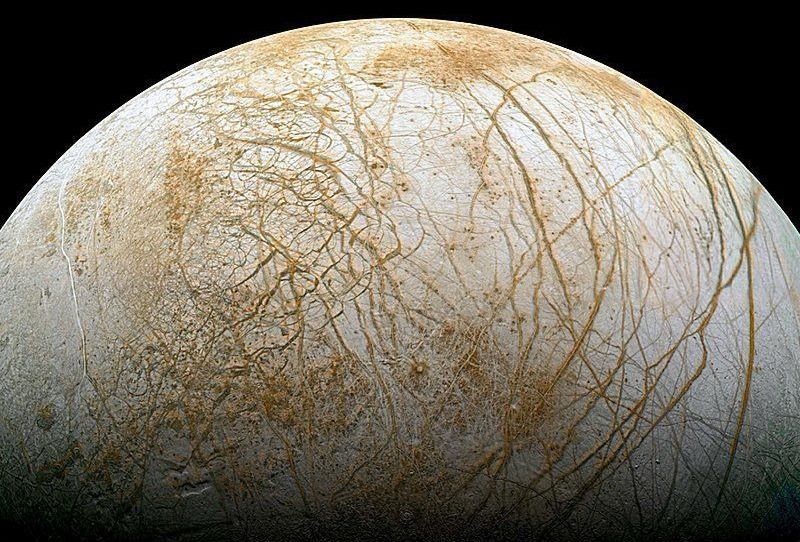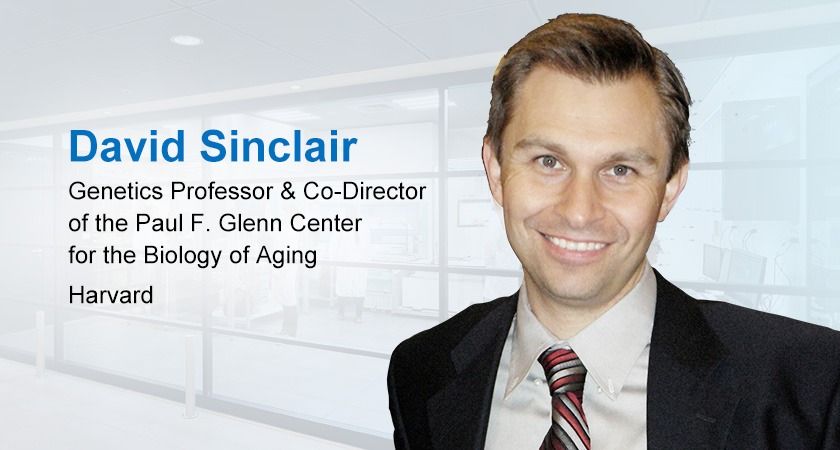Page 10293
Feb 26, 2018
Canon’s newest mirrorless camera shoots 4K video
Posted by Genevieve Klien in category: electronics
The new $779 M50 is similar to the M5, but it’s got a new image processor, new RAW file format, a swivel screen, and more.
Feb 26, 2018
Scientists successfully inverted the circularly propagating optical waves
Posted by Genevieve Klien in category: materials
A new study has revealed that the optical waves or light waves can be turned upside down when they are allowed to propagate through specifically structured surfaces. Normally what happens is that the optical waves emerging out from a point source propagate circularly. That means the optical waves traveling away from a point source characteristically display circular, or convex, wavefronts.
The scientists compared these circular wavefronts to the waves seen on the water surface when a stone is dropped into the water. But the latest study revealed that these circularly propagating light waves’ wavefronts can be turned upside down with the help of a special surface. They developed a new material having a hyperbolic metasurface and successfully inverted the optical waves.
The study was led by Peining Li, an EU Marie Sklodowska-Curie fellow at nanoGUNE. According to him, the reason behind this circular propagation of optical waves is because of the fact that the medium through which light waves propagate is isotropic and homogenous. If the waves are isotropic in nature then their propagation is uniform in all direction and being homogenous means they carry the same characteristics throughout the propagation. But these optical waves can be inverted using specifically structured surfaces like the hyperbolic metasurfaces.
Continue reading “Scientists successfully inverted the circularly propagating optical waves” »
Feb 26, 2018
Deep learning for biology
Posted by Derick Lee in categories: biotech/medical, information science, mobile phones, robotics/AI
Finkbeiner’s success highlights how deep learning, one of the most promising branches of artificial intelligence (AI), is making inroads in biology. The algorithms are already infiltrating modern life in smartphones, smart speakers and self-driving cars. In biology, deep-learning algorithms dive into data in ways that humans can’t, detecting features that might otherwise be impossible to catch. Researchers are using the algorithms to classify cellular images, make genomic connections, advance drug discovery and even find links across different data types, from genomics and imaging to electronic medical records.
A popular artificial-intelligence method provides a powerful tool for surveying and classifying biological data. But for the uninitiated, the technology poses significant difficulties.
Feb 25, 2018
Researchers combine metalens with an artificial muscle
Posted by Saúl Morales Rodriguéz in categories: cyborgs, innovation
Inspired by the human eye, researchers at the Harvard John A. Paulson School of Engineering and Applied Sciences (SEAS) have developed an adaptive metalens, that is essentially a flat, electronically controlled artificial eye. The adaptive metalens simultaneously controls for three of the major contributors to blurry images: focus, astigmatism, and image shift.
The research is published in Science Advances.
“This research combines breakthroughs in artificial muscle technology with metalens technology to create a tunable metalens that can change its focus in real time, just like the human eye,” said Alan She, a graduate student at SEAS and first author of the paper. “We go one step further to build the capability of dynamically correcting for aberrations such as astigmatism and image shift, which the human eye cannot naturally do.”
Continue reading “Researchers combine metalens with an artificial muscle” »
Feb 25, 2018
Could Elon Musk Lose the Satellite Market — and Win the Solar System?
Posted by Genevieve Klien in categories: Elon Musk, satellites, security
When SpaceX launched the world’s biggest rocket ship on Feb. 6, that kind of seemed like a big deal — but not everyone is impressed.
Previewing the SpaceX Falcon Heavy launch, The Wall Street Journal seemed perplexed. Yes, the Falcon Heavy is big, admitted the Journal. But as a “heavy-lift booster,” it said, it is a product designed to serve a market that’s suffering “significantly eroded commercial demand” and “uncertain commercial prospects.”
The problem, as the Journal (correctly) pointed out, is that thanks to advances in rocketry, electronics, and materials technology, “both national security and corporate satellites continue to get smaller and lighter” (and cheaper).
Continue reading “Could Elon Musk Lose the Satellite Market -- and Win the Solar System?” »
Feb 25, 2018
New ‘Metasurface’ Technology Can Turn Light Upside-Down
Posted by Genevieve Klien in category: nanotechnology
Feb 25, 2018
Europa may have hidden liquid ocean to sustain life, new study reveals
Posted by Genevieve Klien in categories: nuclear energy, space, sustainability
Jupiter is a giant hot gaseous planet situated after the asteroid belt at a distance of 365 million miles when it is the closest w.r.t Earth and 601 million miles when it is the farthest. It was just a few years back when Jupiter’s moon Europa was reported as a potential planet that can hose life. Europa headlined on the internet in 2016 after scientists were able to see water vapor like plumes erupting from its crust. But, as a part of new research at the University of Sao Paulo, Brazil, Europa might have liquid water flowing beneath its 10-kilometer deep ice crust. The researchers used data extracted the data from an analogous location on Earth and found that life is sustainable in even the harsh environment that Europa offers as it has a huge liquid ocean under its crust.
Douglas Galante is the part of the research team that stretched towards the Mponeng Gold Mine in Johannesburg, South Africa in such as evidence. During the research, they found that bacterium Candidatus Desulforudis Audaxviator survives inside the mine at the depth of 2.8 km without any sunlight. It uses the method of water radiolysis where the water molecules are dissociated with the help of ionizing radiation. The analysis of the mine highlighted the cracks that run throughout the mine filled with cracks that supply water containing radioactive uranium which in turns, helps the bacterium to break down water molecules and consume the free radicals produced.
Once the free radicals are generated, these subatomic molecules attack rocks in the surrounding which produces sulfate. This is what these bacteria utilize to synthesize energy and store it without even interacting with the sunlight. One of a kind findings confirmed that it was the very first time when scientists were able to explore a living organism using nuclear energy to survive directly. Galante stated that this ecosystem is analogous to that of Europa’s ocean which has a great amount of thermal energy and absolute zero temperature.
Continue reading “Europa may have hidden liquid ocean to sustain life, new study reveals” »
Feb 25, 2018
Harvard’s David Sinclair Treats Aging as a Disease and Plans to Launch a Clinical Trial to Prove It
Posted by Ian Hale in categories: biotech/medical, genetics, life extension
Harvard University’s David Sinclair, world renowned for his anti-aging research, sees no limit on human life span and is collaborating on a clinical trial to evaluate the effectiveness of a new drug aimed at slowing the aging process…
“There is no maximum human life span,” says Sinclair, Ph.D., who is a professor in the Department of Genetics and co-director of the Paul F. Glenn Center for the Biology of Aging at Harvard Medical School. “Anyone who says that doesn’t know what they are talking about.”
Sinclair hopes to demonstrate what he has been researching, – and talking about, for the past 20 years – that aging is a disease, which can be treated.
Feb 25, 2018
ICOs & Altcoins rise and fall—yet, Bitcoin endures
Posted by Philip Raymond in categories: bitcoin, cryptocurrencies, economics, government
At the end of 2017 and the first months of 2018, we witnessed a surge of interest in Initial Coin Offerings or ICOs. Perhaps the word “interest” gives too much credit to ICOs. Most are scams. ICOs are pushed through by vendor hype, rather than pulled through by investor research. They are almost all pump-and-dump schemes.
But what about Bitcoin? It is not a scam, but questions remain about regulation, intrinsic value* and its likelihood to be superseded by something better. Bitcoin skeptics point to two facts: (1) Bitcoin is open source, and so anyone can create an equally good altcoin. (2) Newer coins incorporate improvements that overcome governance and scaling issues: cost, transaction speed, the burgeoning electric needs of miners, or whatever…
 While both statements are true, they miss the point. This is not a VHS-vs-Beta scenario. Bitcoin has achieved a 2-sided network and it is free to fold in every vetted improvement that comes along. For Bitcoin, all those other coins are simply beta tests.
While both statements are true, they miss the point. This is not a VHS-vs-Beta scenario. Bitcoin has achieved a 2-sided network and it is free to fold in every vetted improvement that comes along. For Bitcoin, all those other coins are simply beta tests.
Even the functional tokens will unwittingly feed their “improvements” into Bitcoin. For this reason, it is a safe bet that Bitcoin will reign supreme for years to come—perhaps even long enough for the dominos to fall.
Continue reading “ICOs & Altcoins rise and fall—yet, Bitcoin endures” »
Tags: altcoin, bitcoin, ICO, ICO scam, ICOs, initial coin offering, MLM, pump and dump
















